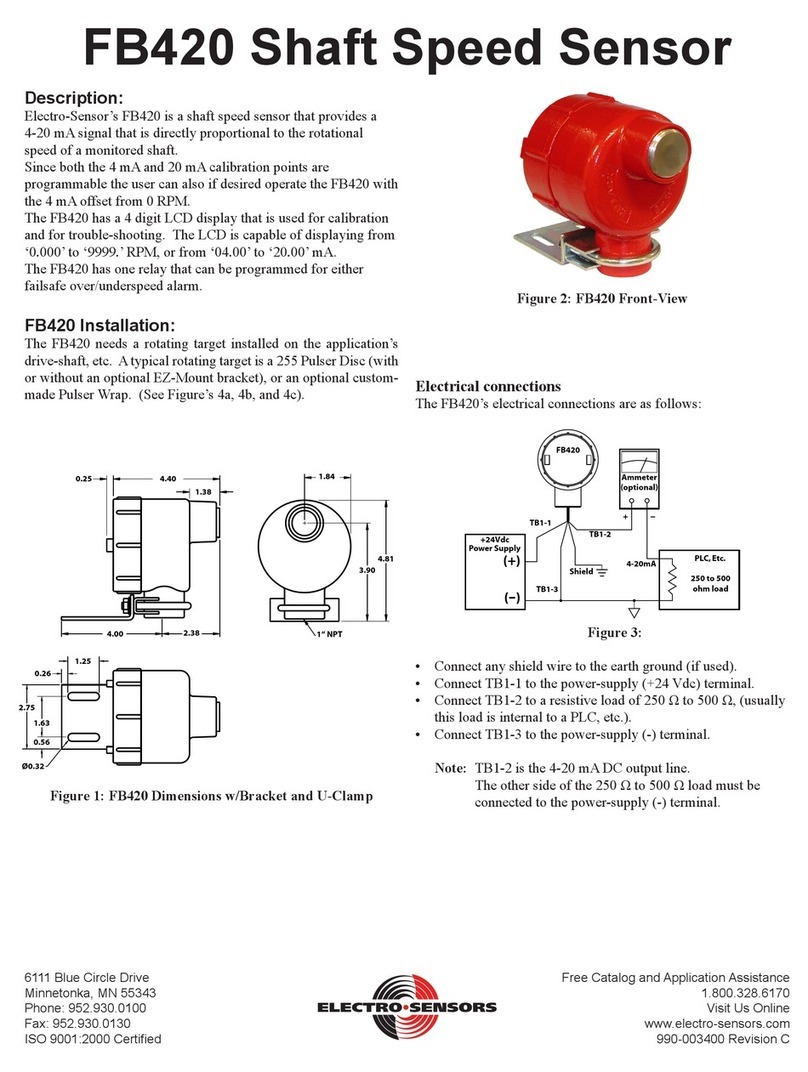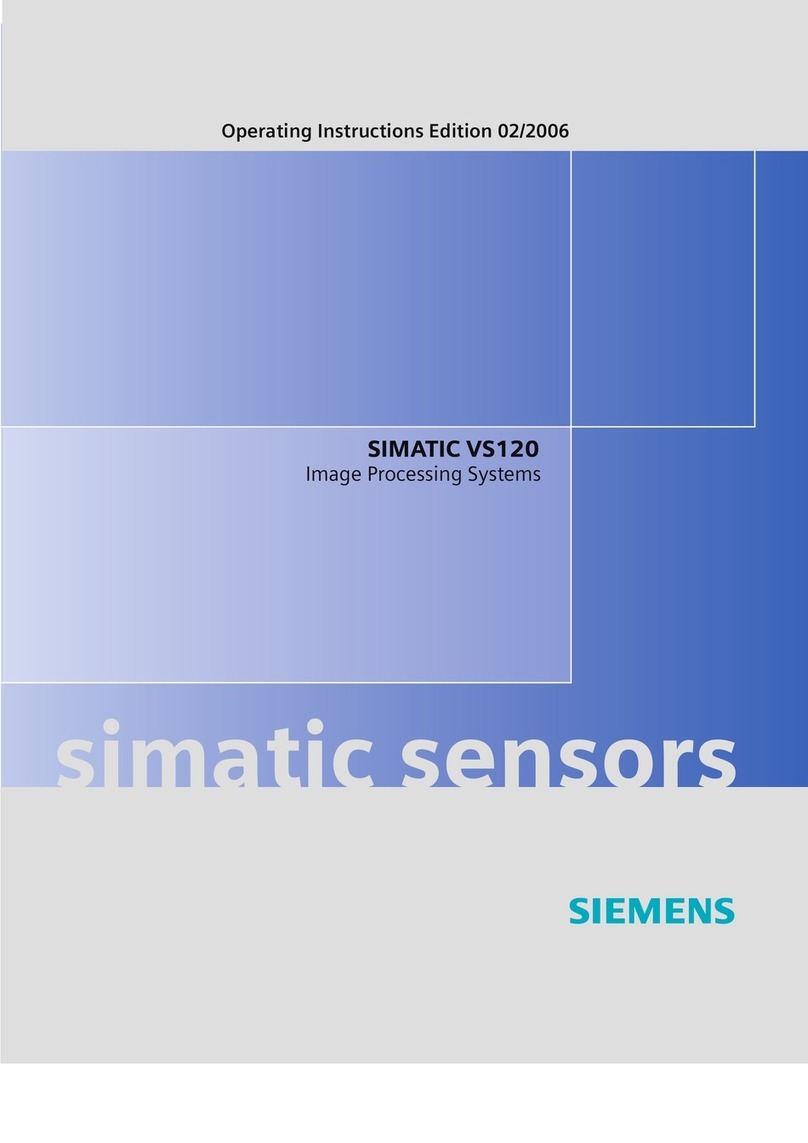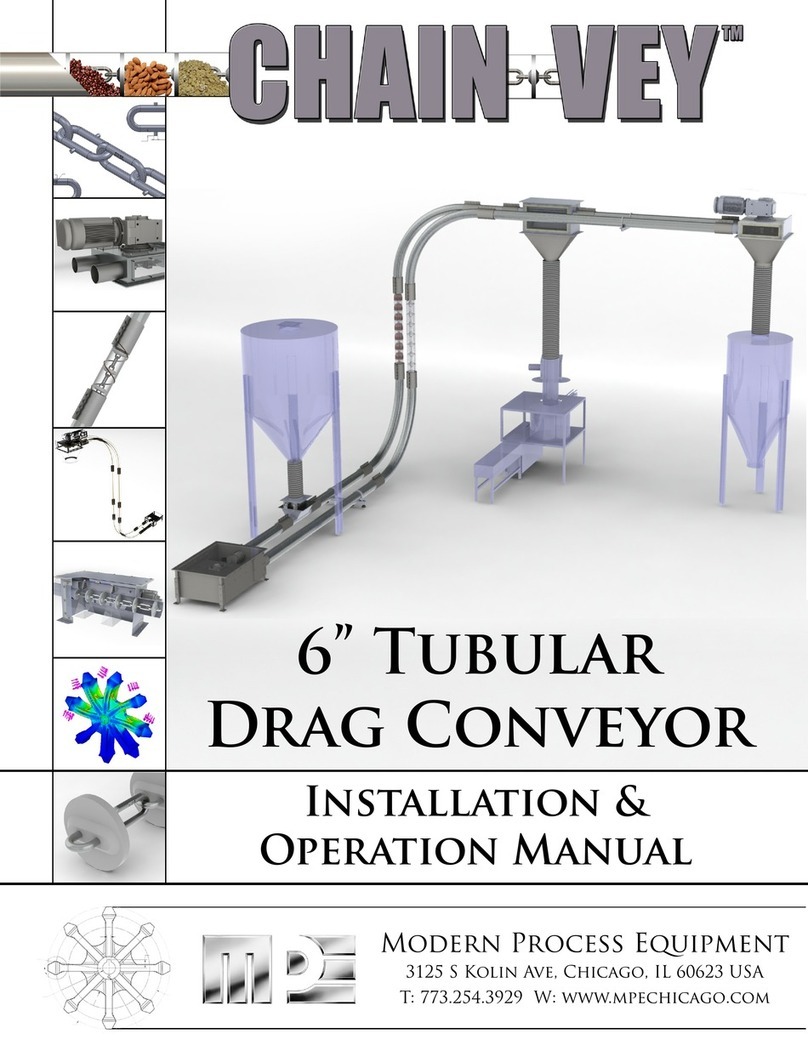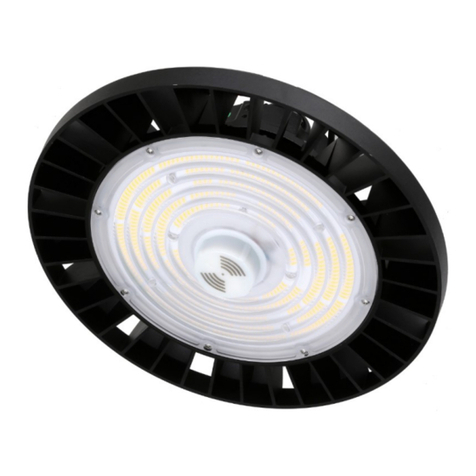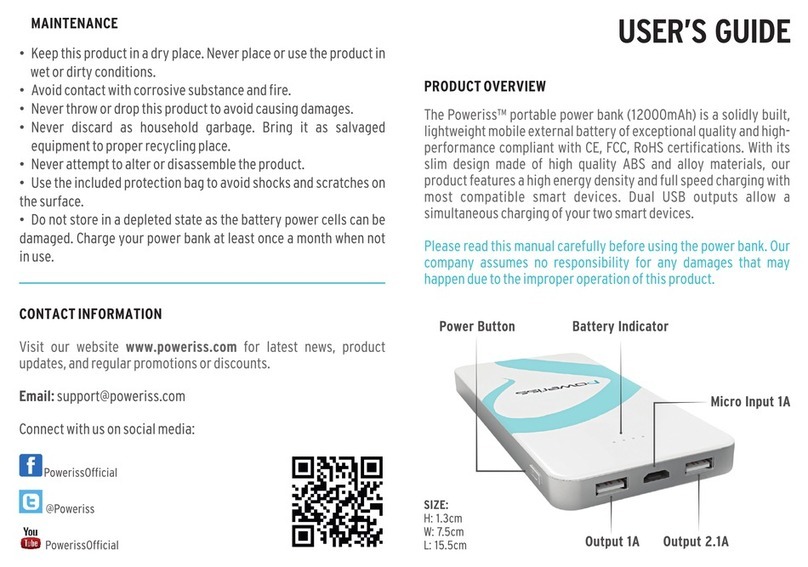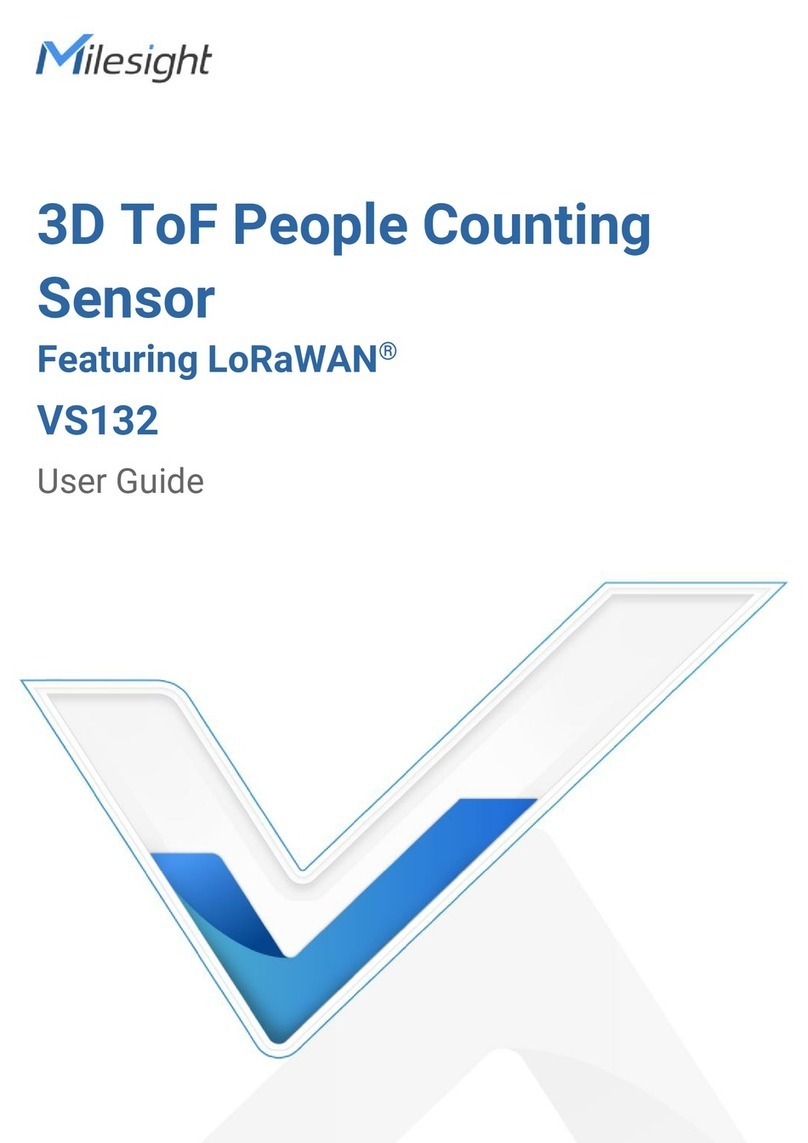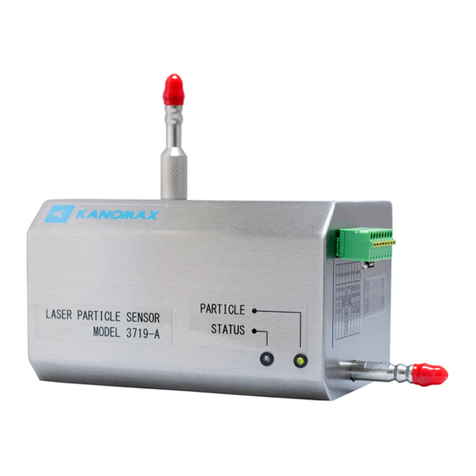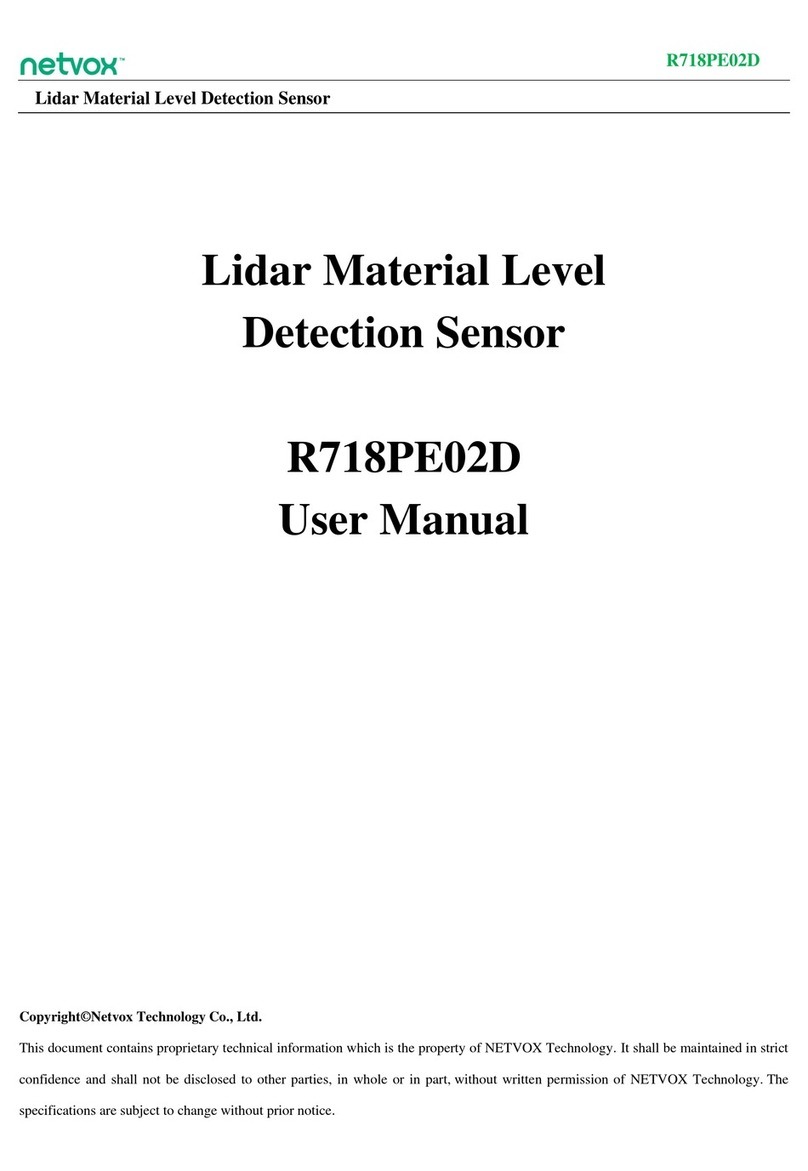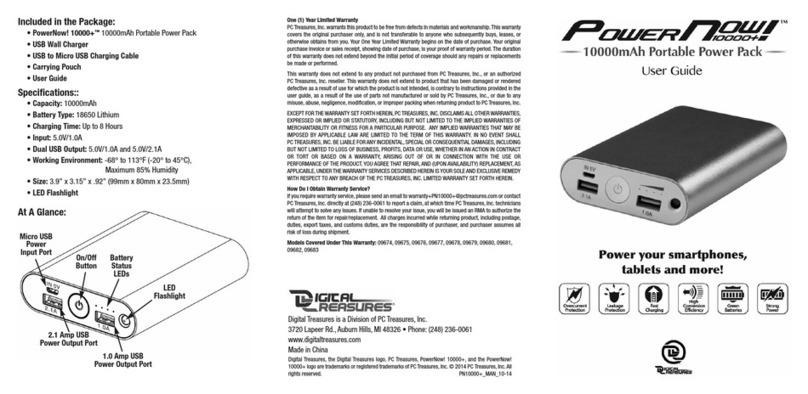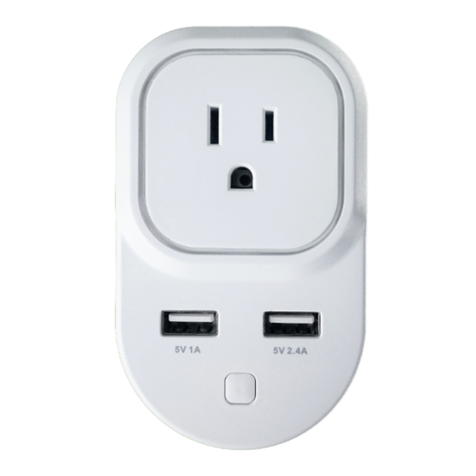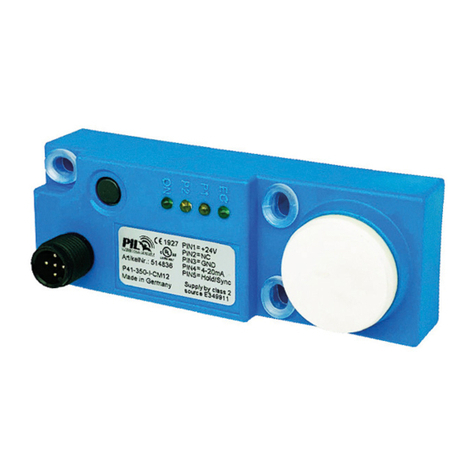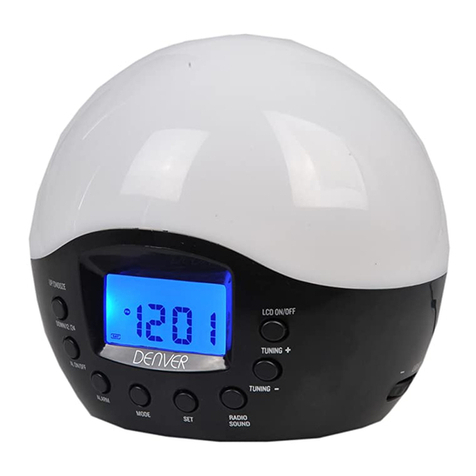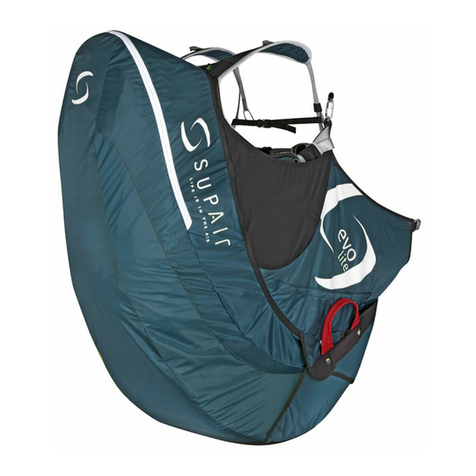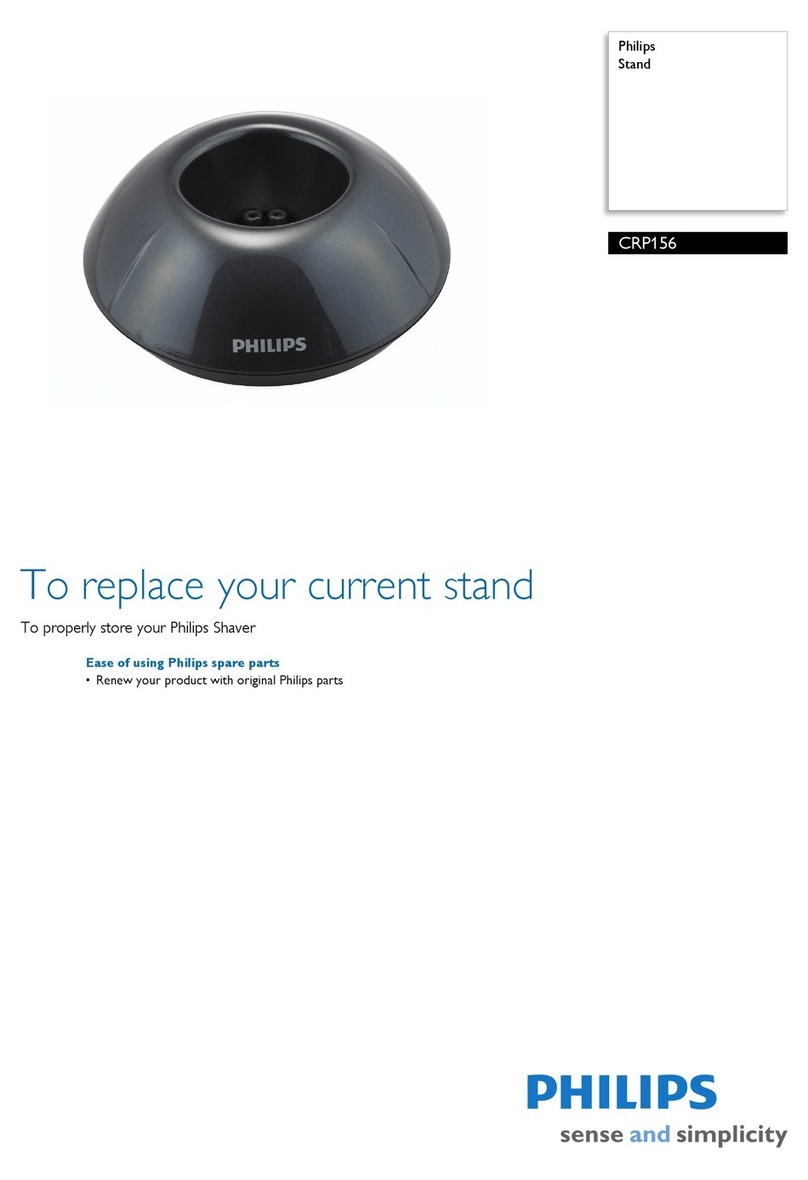CropX Pro User manual

This document and the information thereon are the property of CropX, and
may only be used for the purpose for which this document was supplied.
CropX Sensor Installation Guide
Introduction
This manual provides step-by-step instructions for installing a
CropX sensor in your field.
CropX offers two sensor models:
CropX ‘Pro’ – Soil measurements at 8” & 18” (20 cm &
45cm); see fig. 1 below (left)
CropX ‘Deep’ – Soil measurements at 8”, 18” & 36”
(20cm, 45cm & 90cm); see fig. 1 below (right)
Each model is shipped with a matching
installation kit (installation process is the same
for both models).
On each sensor a label is affixed, indicating the
HW model type.
**Note: Prior to installing your sensor, you
should complete your registration and set up
your farms & fields.
Figure 1 - CropX 'Pro' (left)
and 'Deep' (right) sensors

3
CropX Installation Kit Contents:
Item Description
Item image
Drill bit
‘Pro’: 0.7'' X 21.6''
(18 x 550 mm)
‘Deep’: 1.02'' X 45.2''
(26 x 1150 mm)
Handle
Sensor head adapter
CropX Sensor
Installation Guide

This document and the information thereon are the property of CropX, and
may only be used for the purpose for which this document was supplied.
Step 1: Setting Up
Visit CropX’s knowledge base at
https://cropx.com/knowledge-base/, or scan
the QR code to learn how to get started.
Go to the Apple App Store or the Google Play
Store, search for CropX Adaptive Irrigation,
and download the app to your phone.
Launch the CropX app by clicking on the CropX icon & create
an account.
If you have yet to add a new field, you may do so by clicking
on the ‘add a new field’ sign at the first screen and following
the instructions.
By clicking on one of the fields you’ve created, if no sensors
are currently installed, a link to install your sensor will appear.
Click on it to go to the interactive installation guide that will
guide you through the installation process.
**Note: Allow the system to use your mobile device’s Bluetooth &
Location Services, when prompted.
Step 2: Sensor Installation
Although sensors are shipped with fully charged batteries that
should last the whole season, we recommend charging your
batteries for 10 hours prior to installation, using the USB cable
provided (see charging instructions on the last page).
Please ensure you have the following for installation:
Sensor(s);

5
CropX Installation Kit;
Customer to provide:
A smartphone;
½” cordless drill, minimum 18V (fully charged);
Container filled with a ½ gallon (~2L) of water for each
sensor
Installation Recommendations:
For optimal sensor installation and accuracy, it should be
installed:
In moist soil, preferably around field capacity
Within the zone outlined on the map
In a location in the field that best represents the crop
(between the plants, in average plant density)
In a flat surface, with no slope, no ditch or cracked soil
Away from the tractor and pivot wheel tracks
In a uniformly planted area
Several inches from an active emitter, if your crop is
surface or sub-surface drip irrigated
Please be Mindful of the Following:
Remove any leaves or straw from the installation site
Do not apply downward force
Do not screw the sensor all the way down to the soil
surface (leave a 1-finger gap)
Do not damage the sensor antenna

This document and the information thereon are the property of CropX, and
may only be used for the purpose for which this document was supplied.
To Install the Sensor:
Drill a vertical hole in the soil using your
drill and the provided drill bit. If necessary,
drill and retract several times until the bit
reaches the full depth.
Pour water slowly into the hole until it’s
full, wait 5 minutes and then top off the
hole with more water until it’s full. Wait 5
more minutes and if the soil is dry, add
more water.
**Note: Try not to pour water outside of the
hole as much as possible.
Insert the sensor into the hole and screw it
gently with both hands, until it stands
firmly in the ground. Do not apply
downward force. Ensure there is no debris
(plants, leaves, etc.) caught on the sensor
during installation.

7
Mount the sensor head adapter in the
grooves on top of the sensor head.
Mount the handle on the sensor head
adapter and tighten it.
Screw the sensor almost all the way
down using the handle, leaving a 1-
finger gap between the ground level
and the bottom of the sensor head.
Remove the sensor head adapter from the sensor.
Set the antenna extension cable to a pole/peg such that the
antenna is positioned above the maximum height reached
by the plant canopy at the end of the growing season.

This document and the information thereon are the property of CropX, and
may only be used for the purpose for which this document was supplied.
Uninstalling the Sensor
It is recommended to uninstall the sensors at the end of each
season, by completing the following:
Bring the handle, the sensor head adapter, a 1/2 gallon of
water and a shovel.
Using the app, click on the sensor you wish to uninstall and
a path between you and the sensor will be displayed. Go to
the sensor.
Ensure the soil is moist. It is recommended to wet the soil
around the sensor both a day prior to uninstalling, and just
before the uninstallation.
Connect the sensor head adapter to the handle.
Mount the sensor head adapter to the grooves on the top
of the sensor head.
Mount the handle on the sensor head adapter socket tool
and loosen it counterclockwise.
If you feel strong resistance from the sensor while trying to
screw it out, pour water around the sensor area to soften
the soil. You may use the shovel to dig around the sensor
to further loosen the soil but make sure to keep a distance
of at least a foot away from the sensor.
After removing the sensor, keep the sensor in a safe and
dry place and charge it prior to the next installation.
**Note: In addition to the physical uninstallation of the
sensor, it should also be deactivated from the App.

9
Charging the Sensor
Gently remove the 5 screws on top of sensor.
Remove the charging socket cover.
Connect the USB cable to the USB
cable port (cable provided) and
connect to a certified UL/CE USB
power adapter.
Allow the sensor to fully charge for at
least 10 hours, until the light changes
to green (this may take up to 24 hours,
depending on the charging source).
Before reattaching the charging socket cover, make sure
the rubber sealing ring is in place and clean from dust &
debris.

This document and the information thereon are the property of CropX, and
may only be used for the purpose for which this document was supplied.
Technical Data:
Battery and Power:
Risk of explosion if battery replaced by an
un-authorized personnel.
Dispose used batteries according the local
regulations.
3.7V/10.4Ah/38.48Wh (Two Li-Ion battery pack)
Charging at: 5VDC @ 2A max
Environmental grade:
CropX Pro/Deep sensors comply with outdoor grade
IP68
Temperatures range:
Storage range -4°F to +140° F (-20°c to +60°c)
Operating range 32°F to +122°F (0°C to +50°C(

11
Proprietary Notice:
All information set forth in this document, all rights to such information, all
inventions disclosed herein and any patents that might be granted by
Employing the materials, methods, techniques or apparatus described herein
are exclusive property of CropX Technologies Ltd., its affiliates and/or its
licensors. CropX Technologies Ltd., its affiliates and/or its licensors, as
appropriate, reserve all patent, copyrights and other property rights to this
document, including all design, manufacturing, reproduction, use and sales
rights thereto, except to the extent said rights are expressly granted to
others.
No part of this document may be reproduced, stored in retrieval system, or
transmitted in any form or by any means, electronic, mechanical,
photocopying, recording, or otherwise, without the prior permission of CropX
Technologies Ltd. the information contained herein is designed only for use
with the CropX sensor.
CropX Technologies Ltd. is not responsible for any use of this information as
applied to any other apparatus.
Copyrights C2019, CropX Technologies Ltd.
Disclaimer:
The information contained in this document is subject to change without
notice. CropX Technologies Ltd. assumes no responsibility or liability for any
errors or inaccuracies contained herein, or for incidental or consequential
damage in connection with the furnishing, performance, or use of this guide.
CropX Technologies Ltd. or any of its affiliated entities shall not be liable to
the purchaser of this product or third parties for damages, losses, costs, or
expenses incurred by the purchaser or third parties as a result of: accident,
misuse, or abuse of this product or unauthorized modifications, repairs, or
alterations to this product, or failure to strictly comply with CropX
Technologies Ltd.’s operating and maintenance instructions.

This document and the information thereon are the property of CropX, and
may only be used for the purpose for which this document was supplied.
FCC Regulatory warnings:
Class B- Industrial use
The FCC Wants You to Know
This equipment has been tested and found to comply with the limits for a Class B
digital device, pursuant to Part 15 of the FCC Rules. These limits are designed to
provide reasonable protection against harmful interference in a residential
installation. This equipment generates uses and can radiate radio frequency
energy and, if not installed and used in accordance with the instructions, may
cause harmful interference to radio communications. However, there is no
guarantee that interference will not occur in a particular installation. If this
equipment does cause harmful interference to radio or television reception,
which can be determined by turning the equipment off and on, the user is
encouraged to try to correct the interference by one or more of the following
measures:
-- Reorient or relocate the receiving antenna.
-- Increase the separation between the equipment and receiver.
-- Connect the equipment into an outlet on a circuit different from that to which
the receiver is connected.
-- Consult the dealer or an experienced radio/TV technician for help.
FCC Regulatory notices
FCC Warning (Modification statement)
Modifications not expressly approved by the manufacturer could
void the user's authority to operate the equipment under FCC Rules.
Wireless notice
This device complies with FCC radiation exposure limits set forth for an
uncontrolled environment and meets the FCC radio frequency (RF) Exposure
Guidelines radio frequency (RF) Exposure rule. This transmitter must not be co-
located or operating in conjunction with any other antenna or transmitter.
The distance between user and device should be no less than 20cm.

13
This manual suits for next models
1
Table of contents


